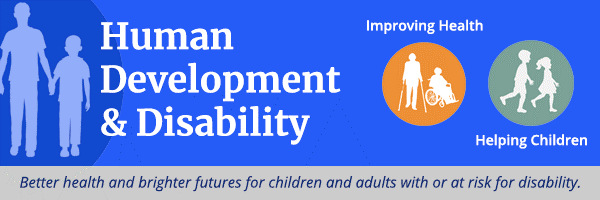DHDD Newsletter – January 2019

It’s hard to believe that we’re already through the first month of 2019. This year, DHDD is committed to continuing our mission to help create better health and brighter futures for people with or at risk for disabilities. We will work diligently with our partners to build upon opportunities to reach that goal together. We are looking forward to what 2019 will bring!
– Dr. Georgina Peacock, Director, DHDD
dhdddirector@cdc.gov
Poverty and Mental, Behavioral, and Developmental Disorders

A new CDC study published in the Morbidity and Mortality Weekly Report found that 1 in 6 children aged 2-8 years old in the US has a mental, behavioral, or developmental disorder. Many of these children and their families are affected by poverty. This research suggests that public assistance programs might offer collaboration opportunities to provide families living in poverty with information, co-located screening programs or services, or connection to care for young children with mental, behavioral, or developmental disorders. Read the article.
Prevent the Spread of Flu!
Did you know that flu season can peak anywhere between late November and March? The best way to prevent the spread of flu is through a vaccine. CDC recommends everyone 6 months of age or older to get the vaccine yearly. There are many kinds of flu vaccines that are available, and there is no preference for one kind over another. It is especially important for people who are at high risk of serious complications from the flu, including children younger than five and people with neurodevelopmental disabilities. It’s not too late to get vaccinated! Check with your doctor today.
Physical Activity Guidelines for Americans
The U.S. Department of Health and Human Services has released the Physical Activity Guidelines for Americans, 2nd edition, which outlines the amounts and types of physical activity needed to maintain or improve overall health and reduce the risk of chronic disease. The document also highlights new benefits of physical activity and tested strategies that can be used to get all Americans more active. The guidelines state that adults with chronic conditions or disabilities should be physically active on a regular basis; however, nearly half of all adults with disabilities don’t get any aerobic physical activity. When adults with chronic conditions or disabilities are not able to meet the above key guidelines, they should engage in regular physical activity according to their abilities and should avoid inactivity. See Chapter 6. Additional Considerations for Some Adults to also find guidelines on physical activity for adults with selected chronic conditions or disabilities.


